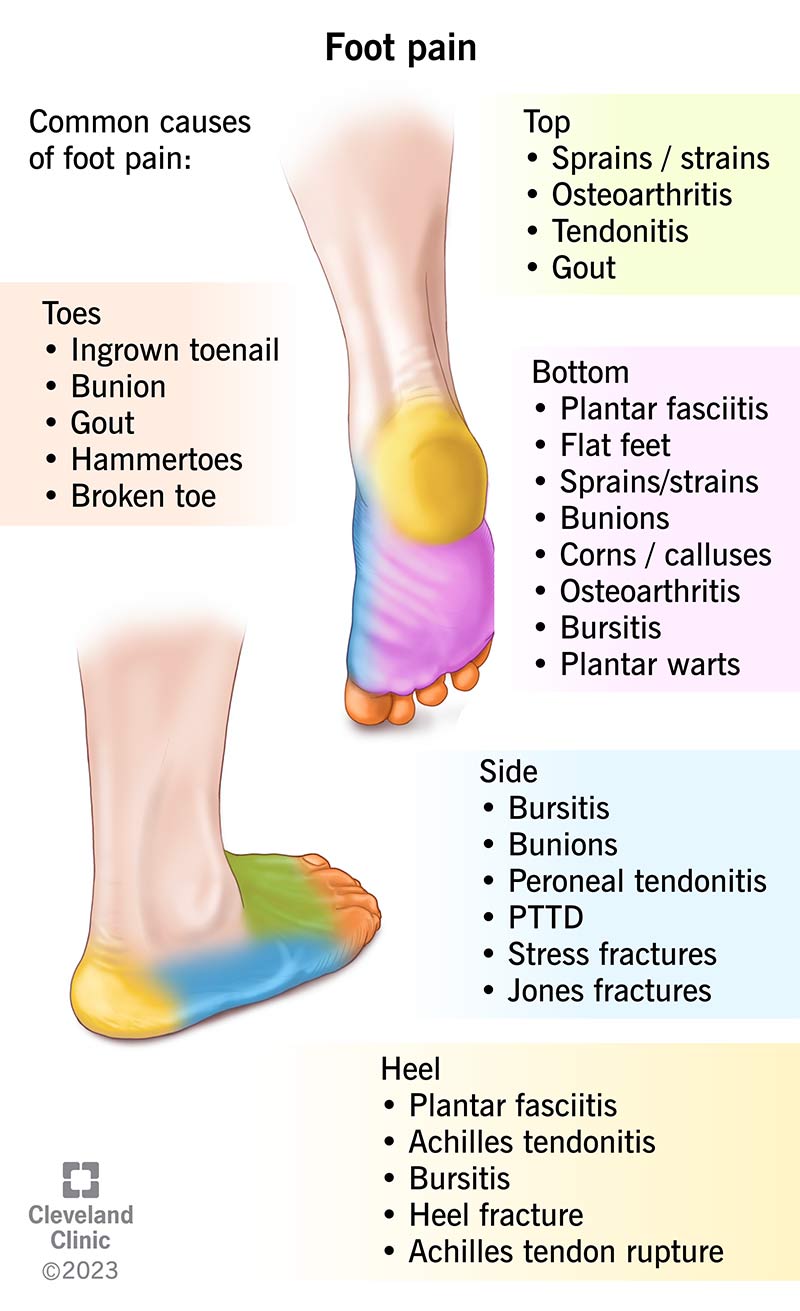Foot pain can occur anywhere in your foot, including your heel, arch and toes. It’s usually a symptom of an injury or an underlying health condition. Identifying the cause can help you get the right treatment.
Foot pain can occur on the top, bottom or sides of your feet. It can affect your heel, toes, arch and anywhere in between.
Because most of us use our feet every day, foot pain is common. But in addition to overuse, you can develop foot pain from sporting injuries, underlying health conditions and wearing shoes that don’t fit properly.
There are several ways to treat foot pain, but it’s important to identify the underlying cause first. Once you know why your foot hurts, you can find the right solution. A primary care physician or podiatrist (foot specialist) can recommend a treatment plan and help you find ways to ease foot pain at home.
Advertisement
Cleveland Clinic is a non-profit academic medical center. Advertising on our site helps support our mission. We do not endorse non-Cleveland Clinic products or services. Policy
Several different factors can cause foot pain. General reasons why people develop foot pain include:

To find the culprit, it’s a good idea to figure out where the pain is coming from. Specific types of foot pain and the most common causes of each include:
If you have pain on the top of your foot, possible causes include:
Pain in the bottom of your foot, including arch pain and ball of foot pain, might develop because of:
Pain on the outside of your foot could indicate:
Heel pain is a common symptom of:
Nerve pain might feel like a burning, tingling or electric shock sensation. Nerve pain in your foot could indicate:
Foot pain treatment depends on the cause and severity of your symptoms. To get a proper diagnosis, a healthcare provider can do a physical examination. They may also take foot X-rays and ask questions about your symptoms. This might include things like:
Your provider will make treatment recommendations based on your specific symptoms and goals. Possible foot pain treatments include:
You can also try things to reduce foot pain at home:
Advertisement
You may not be able to prevent foot pain altogether, but you can reduce your risk by following these guidelines:
Foot pain is common, but that doesn’t mean you have to keep living with it. You should schedule an appointment with a healthcare provider if:
Advertisement
If you lead an active lifestyle or have a job that requires standing for much of the day, you might have frequent foot pain. Here are some things that may reduce your discomfort:
You can try these things to relieve nerve pain in your feet:
A note from Cleveland Clinic
You probably don’t think about your feet very often. But when they start hurting, it’s hard to think about anything else. Sometimes, there’s a clear reason for foot pain. Other times, it may not be so obvious. If you have foot pain that won’t go away no matter what you do, it’s time to call your healthcare provider. They can figure out why. They’ll help find treatments to ease your pain and improve your quality of life.
Last reviewed on 10/11/2023.
Learn more about the Health Library and our editorial process.
Advertisement
Cleveland Clinic is a non-profit academic medical center. Advertising on our site helps support our mission. We do not endorse non-Cleveland Clinic products or services. Policy